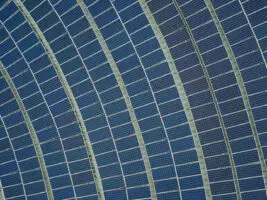And, it may come within the next two decades, if researchers from the University of Delaware (UD) and Delaware Technical College (DTCC) have their way.
A new report from the two institutions suggest that, by 2030, renewable energy could power a large electrical grid a stunning 99.9%, and at close to today’s energy costs!
Analysts at UD and DTCC suggest a well-developed mixture of solar, wind, fuel cells, and battery storage would produce greater supply than electricity demand, plus keep energy costs low.
“These results break the conventional wisdom that renewable energy is too unreliable and expensive,” said co-author, professor in the School of Marine Science and Policy in UD’s College of Earth, Ocean, and Environment Willett Kempton in the phys.org article.
“The key is to get the right combination of electricity sources and storage—which we did by an exhaustive search—and to calculate costs correctly,” he said.
Researchers used a model with 28 billion combinations of storage schemes, and renewable energy sources. Each combination was tested over historical hourly weather data and electricity use over a four-year span. Analysts used data for the model from PJM Interconnection, representing one-fifth of the US electricity grid, which spans 13 states, ranging from the Midwest (Illinois) to the East Coast (New Jersey).
This report was a bit different than others in that it looked at cutting energy costs as much as possible, rather than simply focusing on matching energy generation to energy generation use.
Meanwhile, the report found that, creating more electricity than required during regular hours to meet high energy use (but during low wind hours) would have lower costs compared to storing the excess energy for higher consumption later (of course, this is based on the assumption we won’t see any storage breakthroughs in that time).
Storage can be more costly because storage mediation, hydrogen tanks, or batteries need to be bigger for an extra hour of energy held.
So, one new finding that should warm the hart of clean-tech fans out there is researchers believe a huge electrical system could be running nearly completely on renewable energy.
“For example, using hydrogen for storage, we can run an electric system that today would meeting a need of 72 GW, 99.9 percent of the time, using 17 GW of solar, 68 GW of offshore wind, and 115 GW of inland wind,” said Cory Budischak, instructor in the Delaware’s Technical Community College Energy Management Department and a U of D alumnus.
Wind and solar energy generators need higher installed gigawatt (GW) capacity; unlike conventional generators, because renewable energy forms do not achieve maximum capacity as much of the time, the report found. One gigawatt would equal 250,000 rooftop solar systems, or 200 large wind turbines.
Researchers gazed 18 years into the future on what a large-scale clean electricity system would look like and some of the findings are very interesting:
The study sheds light on what an electric system might look like with heavy reliance on renewable energy sources. Wind speeds and sun exposure vary with weather and seasons, requiring ways to improve reliability. In this study, reliability was achieved by: expanding the geographic area of renewable generation, using diverse sources, employing storage systems, and for the last few percent of the time, burning fossil fuels as a backup. During the hours when there was not enough renewable electricity to meet power needs, the model drew from storage and, on the rare hours with neither renewable electricity or stored power, then fossil fuel. When there was more renewable energy generated than needed, the model would first fill storage, use the remaining to replace natural gas for heating homes and businesses and only after those, let the excess go to waste.
Meanwhile, estimates in the report point to capital costs in 2030 for wind and solar to be 50% less than today’s capital prices, while maintenance costs would be in line with current costs.
“Aiming for 90 percent or more renewable energy in 2030, in order to achieve climate change targets of 80 to 90 percent reduction of the greenhouse gas carbon dioxide from the power sector, leads to economic savings,” the report’s authors noted in the article.
This article was originally published on CleanTechnica. Reproduced with permission







